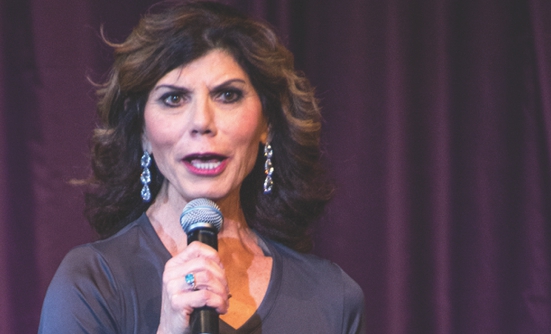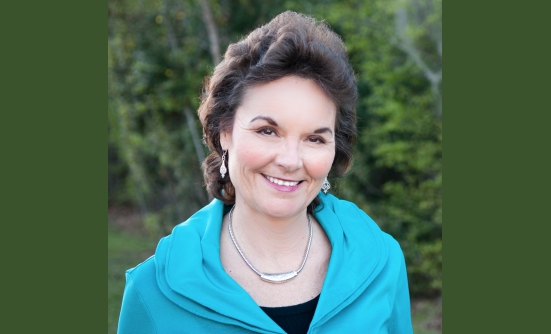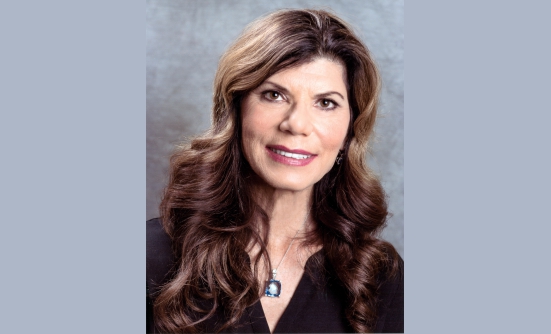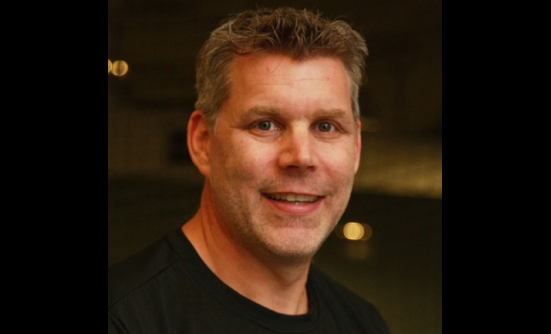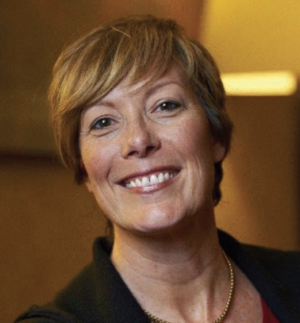
The book Moving Through Cancer: An Exercise and Strength-Training Program for the Fight of Your Life, by Kathryn Schmitz, PhD, MPH, is the book that many of us have been hoping for—a step-by-step plan of action to help cancer survivors heal our bodies and souls through our own actions. Interviews with several readers about this book, as described below, confirm this evaluation.
Dr. Schmitz is Director of Oncology, Nutrition, and Exercise at Penn State Cancer Institute, former President of the American College of Sports Medicine, and is the leader behind the initiative called “Exercise is Medicine Moving Through Cancer” (www.exerciseismedicine.org/eim-in-action/moving-through-cancer/).
She has spent 25 years researching exercise and urging oncologists to give us—their patients and survivors—the exercise prescriptions that scientific evidence has proved to be such an important treatment for people diagnosed with cancer.
Get Up and Move
But this has not happened. So in her book Moving Through Cancer, published in 2021, Dr. Schmitz holds direct conversations with us—patients, survivors, and caregivers—explaining in simple language the science of exercise and why it is so important during cancer treatment and beyond.
Her hope is that we will be inspired to get up and move. The book explains how to motivate ourselves and overcome the barriers that stop us from exercising. She promises that we can do it, and that we will feel better for having done that.
Dr. Schmitz is ruthlessly honest about why she wrote this book now. She vividly recalls her reaction on hearing in 2016 the oncologist diagnosing her partner, Sara, with stage III head and neck cancer. “We had the common experience—some combination of denial and deer-in-the-headlights complete freak-out. We didn’t know what to do, or how to respond,” she said in an interview.
Caregiving in Action
Dr. Schmitz and Sara met regularly with oncologists and surgeons for a month, discussing Sara’s upcoming surgery and future treatment options, and yet, “We were completely unprepared for the kind of care that Sara needed. I had the universal experience of all caregivers: helplessness,” she said.
For Sara, those discussions remain a blur. “They’re trying to tell you how they’re basically going to change your life: inject chemicals into your body, remove your nose or your breast, for example, tell you about radiation, and they’re doing all of this in like 5 to 10 minutes,” Sara said.
So, Moving Through Cancer is their response to this experience. Together, Dr. Schmitz and Sara hope to change the culture of rest that is associated with cancer treatment and beyond—to dispel the myth that especially during cancer treatment, patients should take it easy and not push themselves.
Survivorship Handbook
It is easy to fall into that frame of mind, because fewer than half of oncologists regularly mention exercise or physical activity to their patients, and fewer than a quarter refer their patients to an exercise program, as is shown in Moving Through Cancer (page 12).
JoAnn Behm, RN, is a 73-year-old registered nurse who was diagnosed with breast cancer in August 2021. She discussed the impact of this book on her.
“I just fell in line like so many other cancer patients, caving in to the belief that I needed to ‘listen to my body’ and rest. I suspended my gym membership when I started treatment,” she said in an interview. “I was so motivated by the book, that after reading the first chapter, I went back to where I belong—at the gym.”
This book is focused on exercise, but it is also a handbook for survivorship—outlining the art and science of making life the best it can be after a cancer diagnosis.
Dr. Schmitz also includes practical tips for healthy eating and sleeping during cancer treatment and beyond. She shares what she and Sara learned about the patient–caregiver experience and its impact on their relationship.
The Key Messages: 5 Steps
The key messages in the book include the following 5 steps:
- Move
- Lift
- Eat
- Sleep
- Log
Of these 5 key points, keeping a log (or a journal) is often the first thing we drop on a bad day. But as Dr. Schmitz explains, it is by making your daily log a priority that you can collect the information you need to figure out what happened to you. She insists on the essential role of keeping a log in motivating us to become more active.
Keeping a Log
Keeping a log of what you do, and how it makes you feel, is the “secret sauce” of getting yourself from here to there, Dr. Schmitz advises. Each day you should log your fatigue level, sleep, protein intake, and exercise.
You can reflect on your symptoms and decide: Was it a good day? A bad day? You can use the log to recognize patterns and trends. What made a “good day” good? What was happening in the days running up to a bad stretch? Your log will help you figure out how much is enough, and how much is too much.
A second benefit of the log is that you have precise, accurate data to show your doctor when something feels off. Even if you don’t see a trend and nothing seems obvious to you, your doctor may have a different interpretation that suggests a trend.
Erin Geddis Cummings, founder of the nonprofit organization Hodgkin’s International, agrees that monitoring how she feels during exercise has been essential to her health. Erin is a 50-year cancer survivor who was diagnosed with stage IV Hodgkin lymphoma at age 15. Now, at age 65, she is facing the late effects of cancer treatment, especially related to her heart and lung functions.
“One of the first signs of my having aortic valve disease was a noticeable difference in my running—not being able to go as far, as fast,” she said. “Things had just kind of snuck up on me over time, and before I knew it, I was having open-heart surgery to replace the valve.”
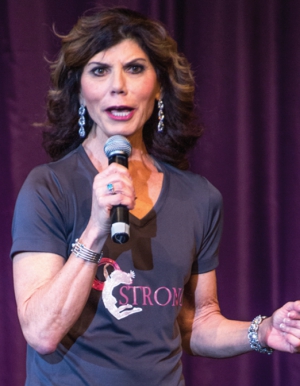
My Personal Story
As a head-and-neck cancer survivor myself, until I read this book, I had not made the connection between my keeping an exercise log and my unexpected, better-than-hoped-for recovery from my cancer treatment in 1997.
I became a regular exerciser at age 30 and was diagnosed with cancer at age 42. By keeping a log for more than a decade, I learned many things about myself: I knew that I didn’t skip workouts when I had a training partner to keep me accountable; I had more endurance when I had more sleep; and unless I tracked how much protein I ate, I didn’t consume enough protein.
But 12 years of keeping a log had taught me one crucial thing: when I didn’t exercise, I got depressed. When the oncologist urged me to rest, I ignored him, but not because I understood the biology of cancer. I kept exercising, because I had clinical depression in my late 20s. I feared a return to depression more than I cared about obeying my doctor.
I kept my log, because I was used to doing it, and because I realized it could help me schedule events on days that were most likely to be good days. When my oncologist asked me why I thought I had such a strong recovery, I showed him my log of doing exercise throughout my treatment and drinking protein shakes to ensure I got adequate protein, although neither of us knew at that point that it mattered.
Ask Your Caregiver
If keeping a log seems too much for you, ask your caregiver to keep it for you. Dr. Schmitz knew from her decades of research that self-monitoring is a powerful tool in helping people lose weight and become more active. But when she was caring for Sara, she didn’t make the connection that logging Sara’s symptoms every day could help them track how Sara was responding to treatment.
Looking back, she believes that whenever possible, the caregiver should keep the log. If nothing else, keeping the log can be an antidote to the caregiver’s feelings of helplessness, providing a tangible way to help.
Solutions for Eating-Related Side Effects
I was already an enthusiastic supporter of the “Moving Through Cancer” program as a result of logging. I was expecting the nutrition section in the book to include warnings against supplements that make extravagant claims, make suggestions for achieving a nutrient-rich balance in our diet, and counsel staying relaxed about food choices.
What I found new in the book, and what I wished I had 25 years ago, was the section on eating-related side effects and strategies to address them. The section covers the entire range of side effects related to eating and digestion associated with cancer therapy.
The side effects of my throat surgery and radiation were predictable, but no one told me what to expect, or how to handle it. No one said to me, “You’ll lose all your saliva; your mouth will be so dry, you’ll be unable to speak normally; swallowing will feel like you are choking; acidic drinks will burn you; and you’ll have to learn to drink without liquid pouring out your nose.”
Each of these symptoms came as a surprise to me, and involved painful trial and error.
Dr. Schmitz and her registered dietitian colleague, Cynthia Thomson, PhD, RD, of the College of Medicine at the University of Arizona, have created a 4-page list of eating-related symptoms and solutions, and every issue I had is included in this list, with a solution that I could have used.
A Dose of Exercise
Still, the greatest achievement of the book is its breaking down the science so that we can all understand that an exercise professional can evaluate a cancer survivor at any point on the cancer journey and prescribe a “dose of exercise” for a particular cancer-related problem in the same way that an oncologist may prescribe a dose of radiation or of chemotherapy.
Dr. Schmitz explains the newest findings of exercise research and suggests that as the science evolves, even more individualized assessments will become available to each patient.
Susan Leigh, RN, was a registered nurse returning from Vietnam in 1972, when she was diagnosed at age 24 with Hodgkin lymphoma; she has received multiple diagnoses since then. An advocate for survivors for more than 40 years, Susan’s response to the idea of “exercise dosing” was blunt: “I wish I’d had this book years ago,” she said. Today, she is enmeshed in treatments that address the late effects of receiving so many treatments and increasing age.
Discussing the book, Susan said, “I really appreciate the separation of phases that survivors go through, and seeing how exercise prescriptions are modified in response.”
She added that one of her biggest obstacles to exercise participation in the past had been her concern about safety. “Reading the book has changed that,” Susan said.
“For someone like me, a sporadic exerciser and content couch potato, the message that ‘doing anything is better than doing nothing’ is what I needed to hear,” Susan emphasized.
Jump-Start Your Education
If reading isn’t your most effective way of learning, or if you want to get started right away, the book is supported by a companion website (www.movingthroughcancer.com) that provides free videos, handouts, and summaries of each key area covered in the book—Move, Lift, Eat, Sleep, Log. The website menus can jumpstart your education based on what you care most about: cancer type, treatment regimen, or your phase in survivorship.
Dr. Schmitz explains that her professional mission is “for all people living with and beyond cancer to be connected to the appropriate exercise training from diagnosis through survivorship.” She also provides lists of books for patients looking for resources.
She ended our discussion by saying, “Encourage people to e-mail me with questions. I answer every e-mail I receive. I am happy to start a conversation.” You can find her e-mail on the website.
Patient Resources
Exercise Is Medicine
www.exerciseismedicine.org/eim-in-action/moving-through-cancer/
Exercise, Diet, and Weight
Management During Cancer
Treatment: ASCO Guideline
Summary and Q&A
https://ascopubs.org/doi/full/10.1200/OP.22.00277
Moving Through Cancer
www.movingthroughcancer.com
Key Points
- Fewer than half of oncologists regularly mention exercise or physical activity to their patients
- Fewer than a quarter of oncologists refer their patients to an exercise program
- The goal of Moving Through Cancer is to encourage patients to exercise as much as they can instead of taking it easy
- Keeping a daily log of your fatigue level, sleep level, protein intake, and exercise will help you know what helps or hurts you; you can share this information with your doctor
- Caregivers can also keep daily logs of the patient’s trends, which may help caregivers overcome feelings of helplessness
- In terms of exercising, doing something is better than doing nothing
- Oncologists should prescribe a “dose of exercise” for patients with cancer the same way they may prescribe a dose of radiation or chemotherapy





